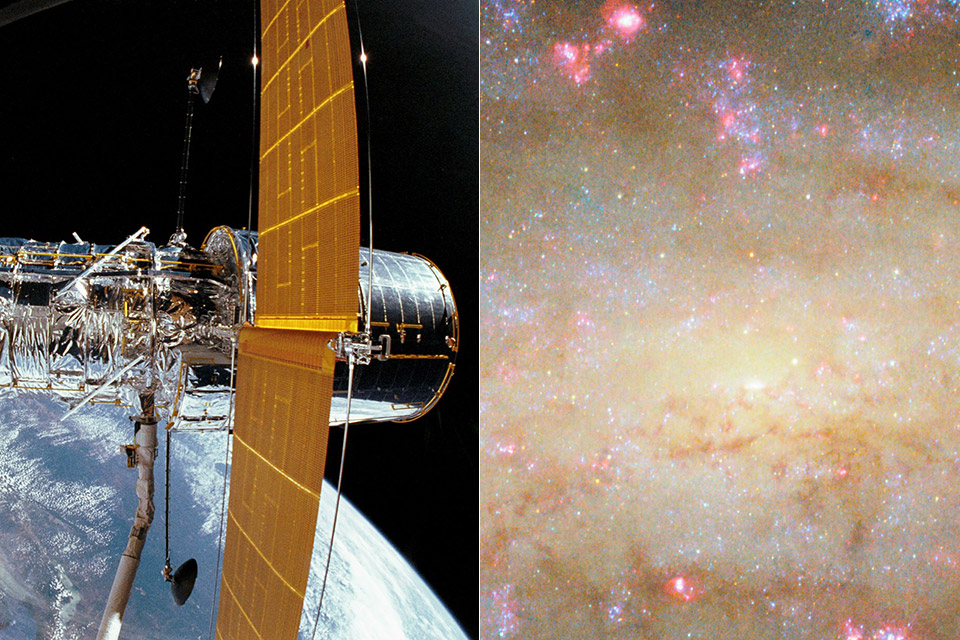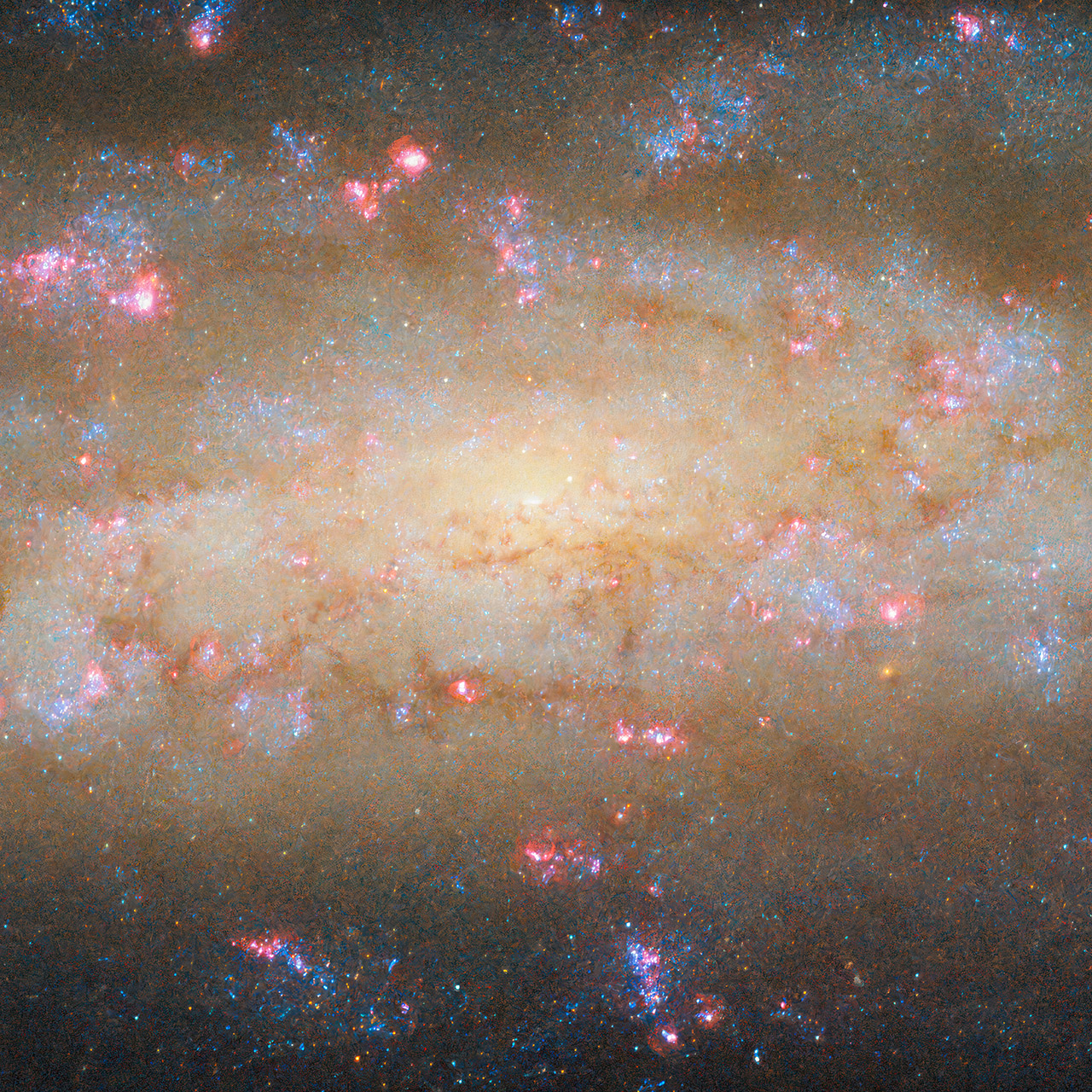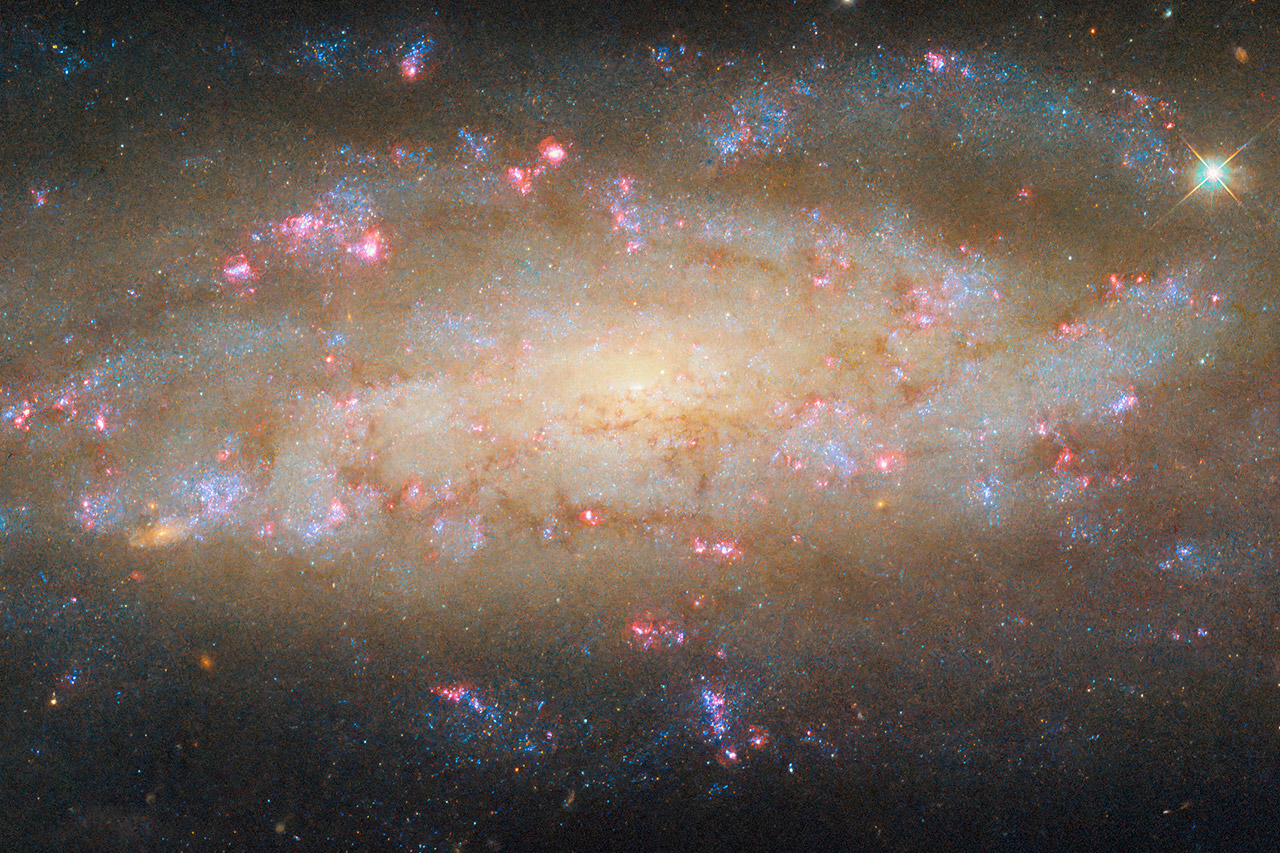Hubble’s Latest Cosmic Portrait Peers at Spiral Galaxy NGC 7456 in the Constellation Grus


NGC 7456, a spiral galaxy 51 million light-years away in Grus, looks like just a blob of stars at first glance. This Hubble Space Telescope’s Wide Field Camera 3 image pulls you in with its warm glow, patchy spiral arms and pink bursts where stars are born.

Spiral galaxies look familiar with their pinwheel patterns and starry discs. NGC 7456 follows that template but adds its own twist. Its spiral arms are clumpy and laced with dark dust clouds that act as cosmic curtains to hide light. Those warm arms radiate from a brilliant centre where a supermassive black hole powers an active galactic nucleus. That center engine makes NGC 7456 more than just a pretty face; it’s a dynamic system that emits energy that we want to study. The image combines ultraviolet, optical and infrared wavelengths to show that activity from the center to the outer reaches.
Sale

Gskyer Telescope, 70mm Aperture 400mm AZ Mount Astronomical Refracting Telescope for Kids Beginners -…
- Superior Optics: 400mm(f/5.7) focal length and 70mm aperture, fully coated optics glass lens with high transmission coatings creates stunning images…
- Magnification: Come with two replaceable eyepieces and one 3x Barlow lens.3x Barlow lens trebles the magnifying power of each eyepiece. 5×24 finder…
- Wireless Remote: This refractor telescope includes one smart phone adapter and one Wireless camera remote to explore the nature of the world easily…
The spiral arms are dotted with bright pink blobs which are star forming regions where gas clouds collapse to form new stars. Those star nurseries glow red as seen here through Hubble’s H-alpha and NII filters at 657 nanometers. Each pink bubble is a hot spot of creation where raw material is turned into suns that will shine for billions of years.

Beyond the visible, NGC 7456 has secrets that X-rays reveal. The ESA’s XMM-Newton satellite found ultraluminous X-ray sources in this galaxy – small, dense objects that emit more X-rays than they should. They could be black holes or neutron stars eating nearby material but their composition is unknown. Each one is a little powerhouse adding to the galaxy’s reputation for weird physics. Hubble’s visible light observations complement those X-ray results to give us a more complete picture of what’s going on.
The center, where the supermassive black hole lies, is another hot spot. Active galactic nuclei like this one are cosmic engines that pump out huge amounts of light and energy as matter falls in. This part of NGC 7456 is blazing and sets the galaxy apart from its siblings. The Hubble image shows the glow in detail, with the center fading into the softer light of the disk. It’s a visual anchor for the galaxy’s overall shape.
Hubble’s filters range from 275 nanometer ultraviolet to 814 nanometer infrared, and show NGC 7456’s many faces. Each wavelength shows a different feature: ultraviolet shows young, hot stars; optical bands the galaxy’s structure; and infrared looks through dust to reveal hidden characteristics.
Hubble’s Latest Cosmic Portrait Peers at Spiral Galaxy NGC 7456 in the Constellation Grus
#Hubbles #Latest #Cosmic #Portrait #Peers #Spiral #Galaxy #NGC #Constellation #Grus








